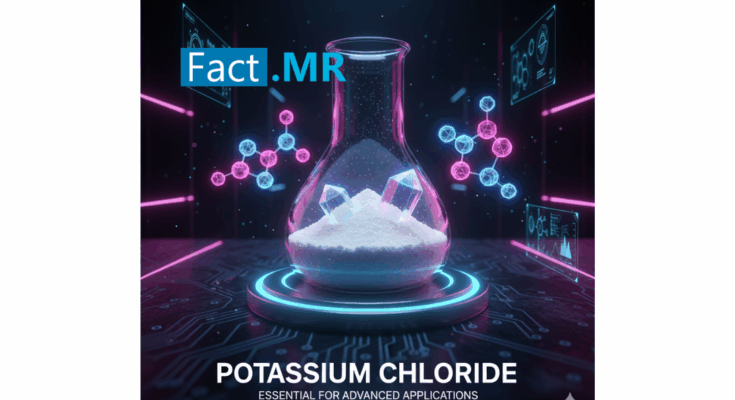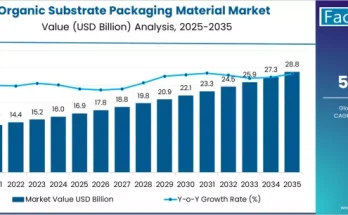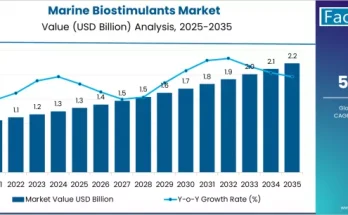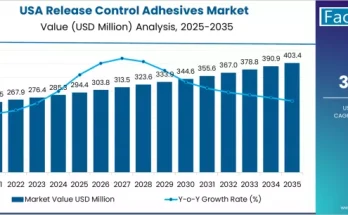The global potassium chloride (KCl) market is projected to grow steadily from USD 13.3 billion in 2024 to USD 17.5 billion by 2034, expanding at a compound annual growth rate (CAGR) of 2.8%, according to the latest report by Fact.MR, a market research and competitive intelligence provider. Rising adoption of KCl-based fertilizers, coupled with increasing demand from food processing, pharmaceuticals, and oil & gas sectors, continues to anchor this growth trajectory.
As an essential mineral in agriculture and industry, potassium chloride remains a cornerstone for sustainable food production and numerous manufacturing applications. It plays a vital role in crop nutrition, industrial processing, bioresearch, and medical formulations, making it a globally traded compound with far-reaching commercial importance.
Market Overview: Consistent Growth Backed by Fertilizer and Industrial Applications
The potassium chloride market has shown healthy momentum, valued at USD 12.94 billion in 2023, and reaching USD 13.3 billion in 2024. Fact.MR projects the market to surpass USD 17.53 billion by 2034, underscoring steady long-term demand supported by robust agricultural and industrial output.
- Market Value (2024): USD 13,302.7 million
- Forecasted Value (2034): USD 17,533.6 million
- Growth Rate (2024–2034): 2.8% CAGR
- Top Region (2024): East Asia with 22.4% global share
- Leading Growth Market: China (3.0% CAGR)
The industry’s resilience is reinforced by technological advancements in fertilizer formulation, hydroponic farming, and bioresearch applications, which continue to expand potassium chloride’s footprint across multiple domains.
Key Market Drivers: Innovation, Agriculture, and Emerging Technologies
1. Growing Use in Fertilizer Production
Over 60% of the potassium chloride produced globally is used in potash fertilizers, essential for ensuring optimal plant growth and crop yield. The surge in population, particularly across Asia-Pacific, is driving the need for enhanced agricultural productivity. Potassium chloride, marketed as Muriate of Potash (MOP), helps improve plant resistance to drought and disease, making it indispensable for modern farming.
In developing economies such as India and China, government subsidies and agricultural modernization initiatives are further boosting fertilizer demand, creating significant opportunities for KCl producers and suppliers.
2. Expanding Use in the Oil & Gas Sector
The oil and gas industry is emerging as another major growth driver. Potassium chloride serves as a drilling fluid additive to stabilize shale formations and prevent clay swelling during extraction processes. The global resurgence in oil exploration and production, especially in North America and the Middle East, is expected to support consistent KCl consumption over the coming decade.
3. Adoption in Hydroponics and Food Processing
The rising trend of hydroponic farming, which allows cultivation of crops without soil, has unlocked a new frontier for KCl demand. In this process, potassium chloride serves as a potassium nutrient source for crops, ensuring efficient growth while reducing land and water use.
Additionally, in the food industry, KCl is utilized as a salt substitute to reduce sodium content and improve flavor in processed foods. Its growing use in low-sodium diets aligns with global health trends emphasizing balanced nutrition and preventive wellness.
4. Increasing Role in Pharmaceuticals and Bioresearch
In the pharmaceutical industry, potassium chloride plays a critical role in electrolyte balancing, hemodialysis, and potassium supplementation therapies. Its presence in medical-grade formulations, including KCl injections and tablets, continues to strengthen its market relevance.
Beyond pharmaceuticals, potassium chloride is widely used in bioresearch laboratories for preparing buffer solutions and as a base compound for chemical synthesis.
Market Challenges: Fluctuating Prices and Environmental Concerns
While the market outlook remains positive, potassium chloride manufacturers face challenges such as price volatility, supply constraints, and environmental scrutiny over chemical fertilizer use.
Fluctuating raw material prices often influence profitability, especially for smaller producers. Meanwhile, global discussions on sustainable agriculture and the environmental impact of chemical fertilizers are pushing the industry toward eco-friendly KCl-based products and bio-potash alternatives.
Regional Insights: Asia-Pacific at the Forefront of Growth
Asia-Pacific: A Fertile Ground for Market Expansion
The Asia-Pacific region dominates global potassium chloride consumption, driven by agricultural expansion and food demand from rapidly urbanizing populations. With China and India accounting for a substantial share, the region’s focus on improving crop yield through nutrient-rich fertilizers ensures sustained growth.
Governments across Asia-Pacific are promoting sustainable farming, fertilizer subsidies, and technological adoption, enabling a positive market environment. Moreover, the rise of eco-friendly production and modern agricultural practices such as precision farming further amplify demand.
North America and Europe: Stable Demand with Diversified Use
North America and Europe maintain stable market demand, supported by established chemical, food processing, and pharmaceutical industries. In the U.S., innovation in hydroponic agriculture and low-sodium food production is reinforcing potassium chloride’s strategic relevance.
Competitive Landscape: Global Manufacturers Strengthening Supply Chains
The potassium chloride market is highly fragmented, with several regional and international manufacturers competing for market share. Leading players include Uralkali, Intrepid Potash, Arab Potash Company, Belarus Kali, Yara, SQM, ICL, Mosaic Co., and Sino Fert.
These companies are prioritizing strategic acquisitions, joint ventures, and long-term supply agreements to enhance production capabilities and ensure consistent product availability. Additionally, global leaders are investing in R&D for sustainable formulations, focusing on reducing carbon footprints and developing chloride-free alternatives for specialized applications.
Fact.MR’s analysis highlights that companies with integrated supply chains and localized production units are expected to gain a competitive advantage in cost efficiency and market responsiveness.
Segmentation Insights: Expanding Across Multiple Applications
By Form: Granular, Powder, Solution, Tablets, Pellets
By Grade: Industrial, Laboratory
By End-Use Industry: Agriculture, Chemical, Pharmaceutical, Electronics
By Application: Fertilizer, Food, Oil Drilling Stabilizer, Deicers, Hemodialysis Solutions, Electrolyte Supplements
Among these, fertilizers continue to dominate global consumption, while pharmaceutical and food-grade KCl are emerging as high-margin growth segments.
Outlook: A Sustainable Future for Potassium Chloride
As the world grapples with food security and sustainable industrial development, potassium chloride will remain central to innovation in agriculture, biotechnology, and materials science.
With its diverse applications and consistent performance, the global potassium chloride market represents a stable yet evolving landscape—one that offers manufacturers, investors, and research leaders significant opportunity to innovate, diversify, and lead through the next decade.
Browse Full Report : https://www.factmr.com/report/potassium-chloride-market



